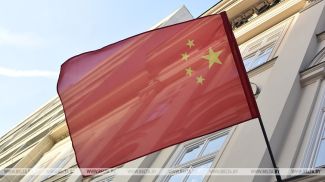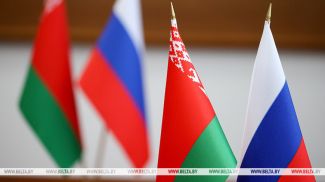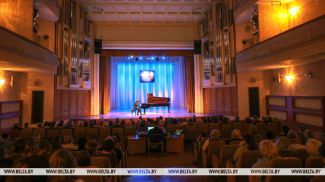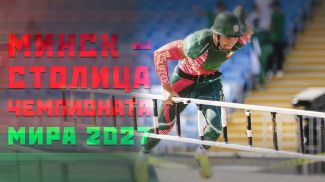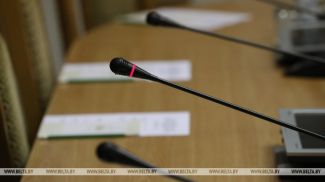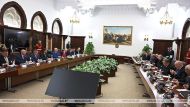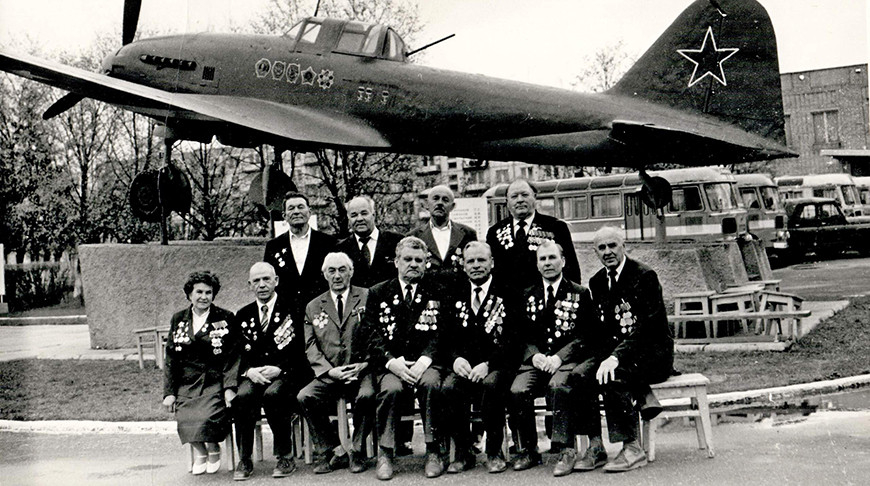
News of the story
"Victory Parade: Stories and Faces"
Nikolai Frolkin-Chepurnov only made it to the front in August 1944. But the number of heroic deeds he managed to perform before Victory would have been the envy of even seasoned pilots. In 103 combat missions, he destroyed 12 tanks and self-propelled guns, more than 200 Nazis, and a fascist fighter plane. He participated in Operation Bagration, crushing the enemy in the Baltics and East Prussia. In a year of combat, he rose to become a flight commander and, by the end of the war, reached the rank of Captain, serving as deputy squadron commander.
“Hide in the rear? No!”
This article saw the light of day thanks to Viktor Pinigin, Deputy Chairman of the Luninets City Veterans' Council. Learning about our project, he contacted the editorial office to tell the story of this legendary participant of the Victory Parade.
“Nikolai Feofanovich Frolkin-Chepurnov was not just a brilliant combat pilot and a cavalier of six orders. He was a wonderful man. I knew both him and his son Nikolai personally and was witness more than once to how townspeople, spotting the veteran from afar, hurried to greet him,” Viktor Pinigin says. “I am very proud that one of the streets in Luninets is named in his honor.”
Nikolai's love for aviation appeared in his childhood. In the spring of 1941, the young man had just graduated from an aeroclub with top marks and entered the Chkalov Aviation School. And then war started! Like many cadets, he immediately wrote a report to the general requesting to be sent to the front. But the answer for everyone was the same: “The front does not need inexperienced pilots. Study.”
Nikolai Frolkin-Chepurnov finished his studies in May 1944. When the top graduate was offered a job as an instructor to train young cadets, he gave a categorical refusal: “My comrades will be fighting the fascists, and I'll be hiding in the rear? No!” Receiving orders to the 1st Guards Red Banner, Orders of Lenin, Kutuzov, and Khmelnitsky Stalingrad Assault Aviation Division of the 1st Air Army of the 3rd Belorussian Front, he began crushing the enemy on the ground and in the air from August 1944. Almost immediately, the young pilot proved in practice that he was capable of successfully completing any task.
In one of the award documents, we read that on 9 August Junior Lieutenant was already commended with gratitude from the army commander. That day, as part of a group of six IL-2s, he flew three times to destroy enemy tanks and infantry. “Making from four to seven passes on the target per mission, despite heavy anti-aircraft fire and the presence of enemy fighters in the air, he skillfully searched for tanks and artillery and, attacking, destroyed them. On this day, he personally destroyed one tank and one field artillery gun, suppressed the fire of a battery of small-caliber anti-aircraft artillery, and killed up to ten enemy soldiers.”
The Lucky Number 13
They say pilots are superstitious people. Nikolai Frolkin-Chepurnov had his own special talisman: a small icon, a blessing from his grandmother Nastya. He carried it in a secret pocket from his first combat mission. Apparently, his grandmother had prayed for her grandson to God in advance, because in many battles our hero survived by nothing short of a miracle.
Once, a plane with the number 13 arrived from repairs. Frolkin-Chepurnov turned out to be the only one who dared to get behind its controls. This was his 16th combat mission as part of a group of six to attack enemy tanks. After several passes and attacks he got a direct hit on his attack aircraft. The plane caught fire, acrid smoke filled the cockpit. At that moment, he thought only about how to make it back across the front line. Nearby, he saw red-star escort fighters, who were encouraging him by rocking their wings. But the burning plane could explode at any minute.
As soon as it crossed the front line, Nikolai Frolkin-Chepurnov gave the order to his gunner/radio operator to jump. As soon as he left the burning plane, Nikolai Frolkin-Chepurnov jumped himself. The landing was successful, but it took them all night to get back to the airfield. All that time, the crew of aircraft No.13 were considered dead, so they were met with warm embraces and prophecies of a long life.
The veteran also recalled the following incident. “The airfield near Minsk, where the attack aircraft were stationed, was located next to a forest. According to intelligence, the Germans had learned about the airfield's location, although we observed camouflage very carefully. There was no time to call for help; we had to rely only on the flight and technical personnel. We immediately began preparing for an all-round defense. Using available lumber, we turned each plane into a ground firing point with its own sector of fire. By evening, we were ready to use all the firepower we employed in the air to destroy the attacking enemy on the ground.”
Trying to capture the airfield, destroy the planes, and the ammunition and fuel depots, the enemy infantry pressed forward relentlessly. But all attacks were repelled. The veteran noted with pride that not a single fascist reached the planes that night, and the survivors had to retreat, leaving many corpses on the battlefield. In the morning, the attack aircraft took to the air again to continue attacking the retreating enemy.
The veteran also remembered the battles near Lida. Intelligence reported that a large number of enemy tanks had gathered in one area. The group of six attack aircraft was given a specific task: to locate and destroy the enemy's armored vehicles. But, approaching the designated area, they found no tanks. Soon a message came from the guidance service: strike the trees and bushes along the road!
“When the planes descended, the jagged tracks from the tank treads became visible, ending at the trees and bushes. The crews formed up in combat formation and opened devastating fire. It was clear these were carefully camouflaged tanks. Already as a result of the first attack, several of them immediately burst into flames. The attack aircraft made about ten passes until they ran out of ammunition. Almost all of the enemy's armored vehicles were turned into piles of twisted metal. All crews returned to the airfield. The Germans called our IL-2 planes ‘Black Death’,” the veteran recalled.
Once, our hero even had to land at the airfield in a burning plane. He lowered the landing gear with the thought: “Come what may. Maybe it won't explode!” He applied the brakes at 12 atmospheres, the absolute limit. Skidding through the mud by inertia (it was spring and the field was soggy), the IL-2 stopped. A colonel drove up in a car, left the vehicle at a safe distance, and ran to the plane. He helped the crew get out of the cockpit and quickly led them far away from the burning aircraft. Only later did Nikolai Frolkin-Chepurnov learn that this was the twice Hero of the Soviet Union Aleksei Alelyukhin.
“People lifted us up”
The veteran recalled his participation in the 1945 Victory Parade in Moscow with particular pride: “The train stopped. The capital greeted us with bright streams of sunlight. As soon as we stepped onto the platform, people lifted us up, began tossing us into the air, and shouted ecstatically: ‘Hurrah!’ And all around there was laughter, flowers, and joy!”
The preparation for the parade lasted a whole month. “We practiced marching, bearing, and alignment. A wonderful uniform was tailor-made for each of us, and our polished-to-a-shine medals gleamed on it,” the pilot recalled.
The historic parade took place on 24 June. It was an unforgettable spectacle, the veteran said. To the melody of the massed military band's march, the columns of victors passed in precise formation. In one of them, as part of the 3rd Belorussian Front, marched Nikolai Frolkin-Chepurnov.
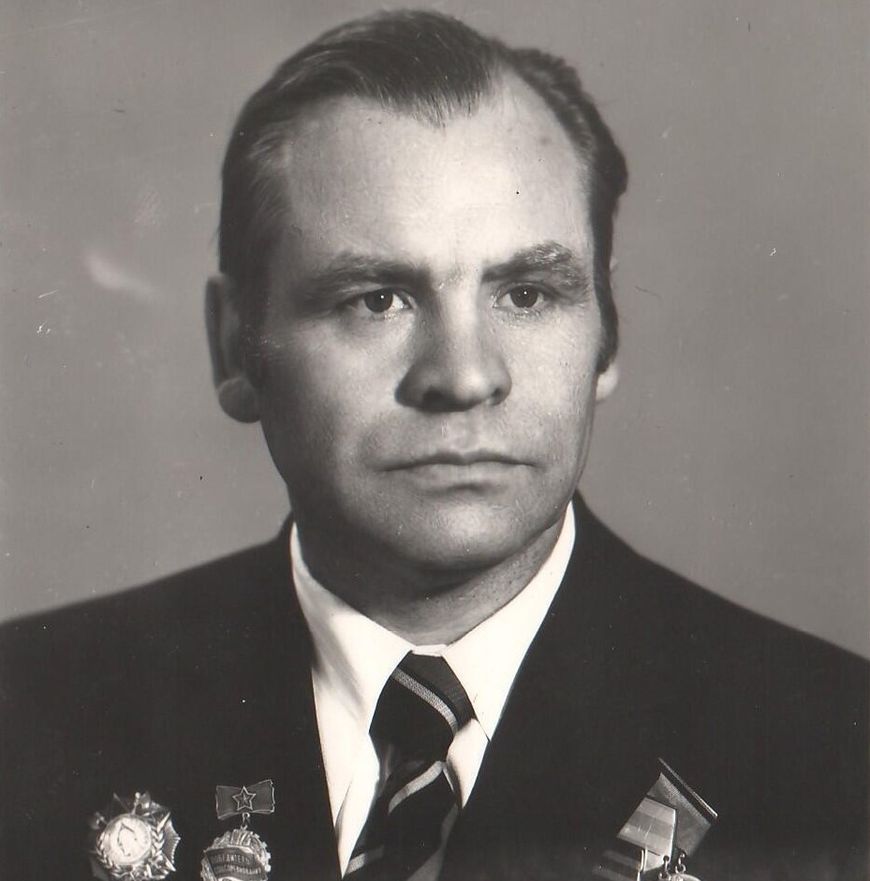
The veteran passed away on 9 January 2010. His beloved wife, Valentina Petrovna, is also gone, as are his two eldest sons, Igor and Yuri. But the youngest son, named after the hero, still lives in Luninets. Nikolai Nikolaevich keeps the memories, photographs, and military awards of his father with special reverence, considering him his most important role model.
If you are a relative or friend of a frontline soldier who took part in the Victory Parade on Red Square, Moscow, in June 1945 and you are willing to share your family story and photos with us, please call +375 17 311-33-17 or send an e-mail to ygavrilenko@belta.by. Let's tell the story of our Victors together!
Yulia GAVRILENKO,
7 Days newspaper
Photos courtesy of Nikolai Frolkin-Chepurnov's family





